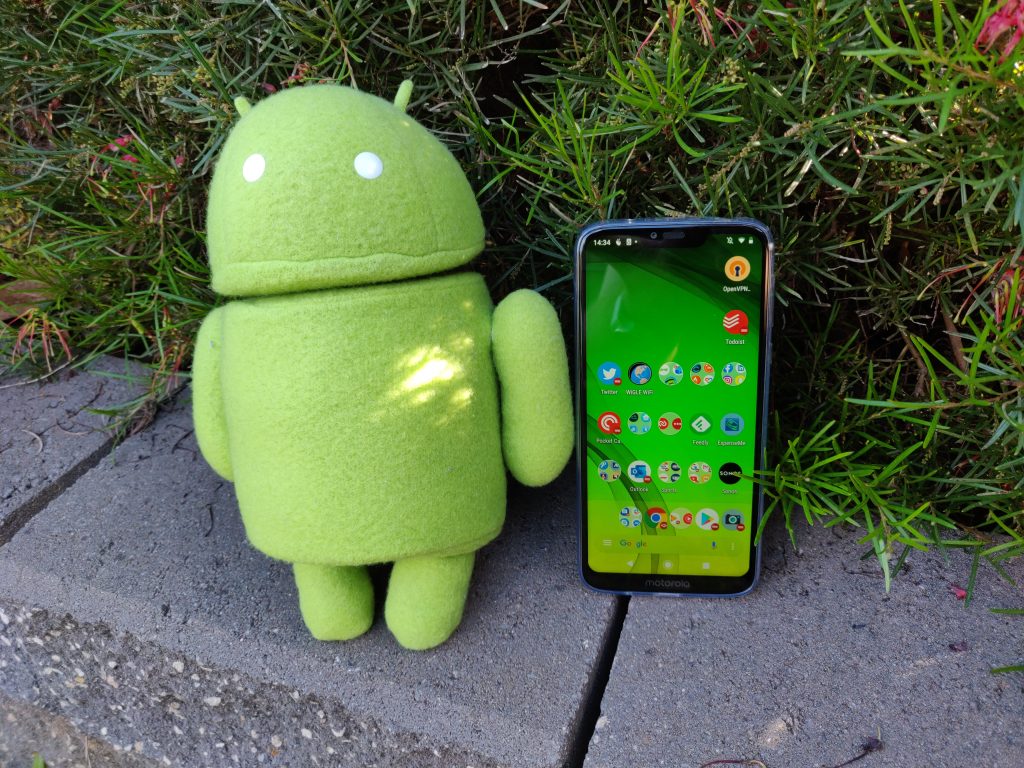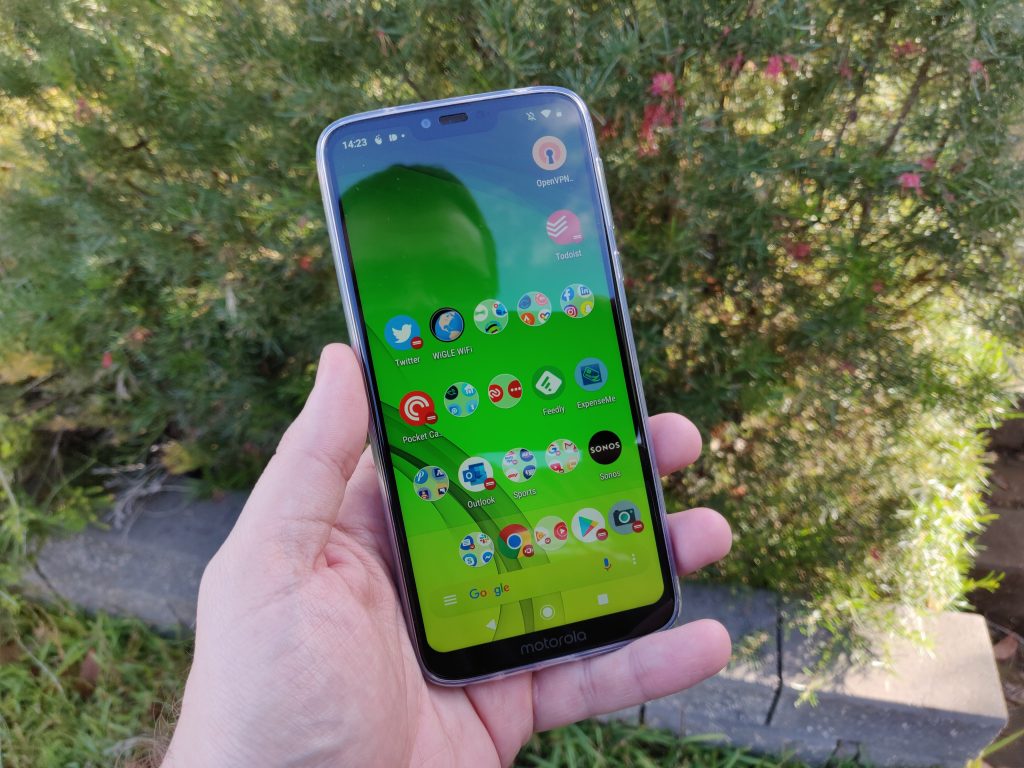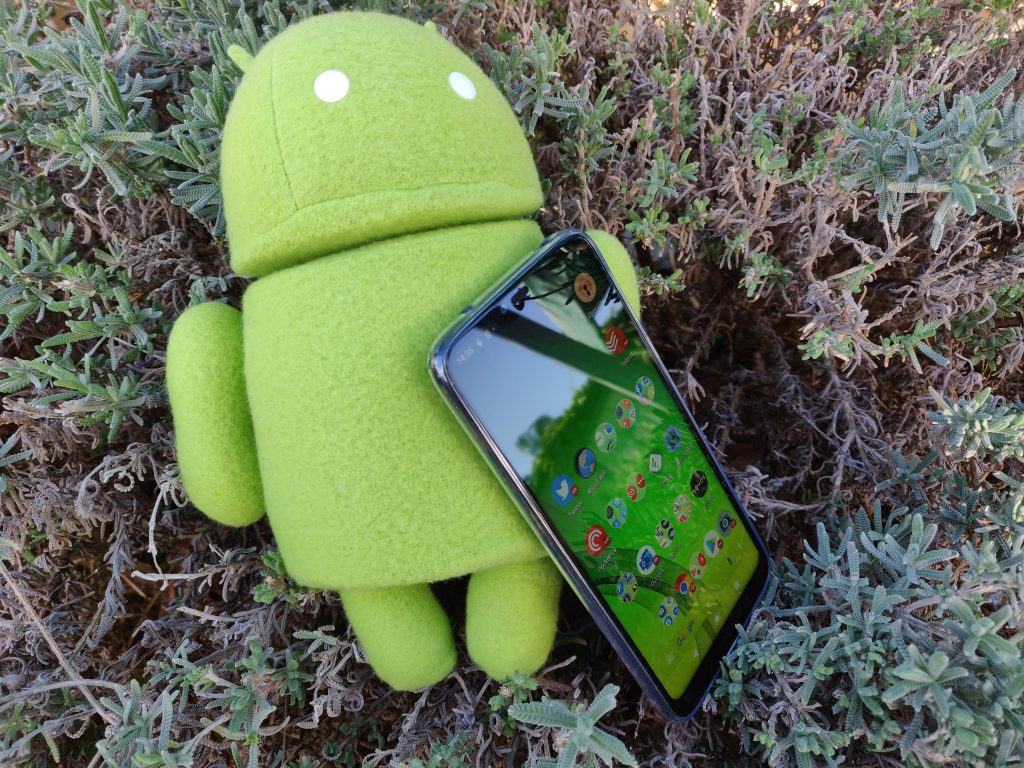Motorola have produced some awesome phones in the last couple of years. They’re delivering really good quality smartphones, with solid specs at a price point that is affordable to just about everyone. The G7 Power is the latest to arrive in Australia from Motorola, so let’s take a look at it.
The prices are fluctuating hugely at the moment: Starting at $284 on Today’s Deals (at the time of writing this review) to about $420 including shipping from Amazon, and there’s huge variation of costs between.
As with the G7 that we reviewed not long ago, the price is hugely deceptive on the G7 Power if you let it set your expectations of the phone but there is a couple of pretty serious compromises that will affect purchasing decisions for some users.
What’s inside?
The G7 Power is a mid range device that is going to meet the needs of most users, but not necessarily offer a genuinely exciting experience that higher devices may.
| Key Specifications: | Moto G7 Power |
|---|---|
| Release date | February 2019 |
| Screen size | 6.2-inch |
| Screen technology | LCD |
| Resolution | 1,920 x 1,080 |
| PPI | 403 |
| Rear camera | 12MP |
| Rear aperture | f/2.0 |
| Front camera | 8MP |
| Front aperture | f/2.2 |
| Chipset | Snapdragon 632 |
| Core config | 8 x 1.8 GHz |
| RAM | 3GB |
| Storage | 32GB |
| MicroSD | Yes, up to 512GB |
| Battery | 5,000 mAh |
| Battery removable | — |
| Connector | USB C |
| Headphone Port | Yes |
| Headphone Location | Bottom |
| Speaker Configuration | Bottom |
| WIFI standards | 802.11 a/b/g/n |
| Bluetooth standards |
|
| NFC | — |
| Location |
|
| Android OS | Android 9.0 |
| Vendor skin | Moto Stock |
| Dimensions | 160.83 x 76 x 9.4 mm |
| Weight | 198g |
| Colours | Marine Blue |
Physically the 6.2-inch screen is Gorilla Glass 3 and offers a similar viewing area but much lower resolution, and you can see the difference. The Motorola G7 Power is slightly (and I mean slightly) larger than the G7 at 159.4 x 76 x 9.3mm but substantially heavier at 193g, but this is easily attributable to the extra 2000mAh battery capacity vs the standard G7.
No bloat, no worries!
Stock Android is often sought after, but not as regularly delivered as users would like. We’ve see a number of phones from Motorola that have stock Android meaning no bloat and no worries on a well optimised OS that performs like the hardware is higher level than it actually is.

For the most part the functionality of the G7 power and usability were identical to the G7. Hardly surprising given 95% of the specs are identical and the software is exactly the same: Head over to our G7 review to check out what we thought of that phone.
The major points of difference on the Power vs the G7 are:
5000 mAh battery
Finally and thank you Motorola for realising that users will reasonably happily sacrifice some size and weight to add significant battery life. When you add an extra 2000mAh of battery capacity, you’re going to get strong battery performance.
I’m not just happy but really impressed with the G7 Power because it delivered consistently 2 days of battery life or more. At one point (granted there were a couple of very quiet days in there) I got 4 full days out of the battery across a Friday where the phone came off charge at 7am until Monday where I plugged it in (with 2% battery remaining) at 10 pm. I would fairly confidently say that very low use cases will see this regularly, perhaps as much as 5 or 6 days if you don’t have background processes like chats or social media running all the time.
The screen
Oh man… Motorola, this was nearly brilliant. Unfortunately a low resolution screen has dampened my enthusiasm for the phone. 720 x 1570 running 279 ppi just isn’t good enough and you’ve proven you can do better than this. A good screen can take an acceptable phone and make it good, conversely a bad screen can completely reverse that feeling.

Users would happily pay more for a better screen with the better battery. Even the screen on the G7 which was released not long ago was excellent, the sacrifice of screen quality here to (an educated guess) get the extra battery in the G7 Power was a bad decision – users will sacrifice space for battery, not quality of product.
The lower resolution on this screen is noticeable. I struggled a few times when using it for a period of time, the lower resolution and ppi just made the screen a bit hard on the eyes. For many users, this isn’t going to be a deal breaker – some will just not be happy about it.
What’s it good at?
This is a really cheap phone when you look at other options on the market. An RRP of AU$350 makes this a very affordable phone, and if you look around you’ll find it cheaper than that too. Perhaps it’s Moto’s shot at the tradie market? Great battery, solid performance and if it breaks, bin it. Other than the cheap market, I’m not really sure what their target is.
That aside, the device performance day to day was really good. It was reliable, predictable and very consistent in behaviour even when it’s been on for days at a time with a lot of apps running throughout the day.

The other thing that I really liked about the G7 Power (as was the case with the G7) is the fact that the Android version and security updates were right up to date. The phone already had the April security update on it when I received it for review.
What’s it not so good at?
OK – Here goes…
The G7 power felt like a step backwards for Motorola from the G7. That’s not to say it’s a really bad phone as the G7 Power meets the specs and performance I would expect from a phone of this budget and had I not used the G7 very recently, it probably wouldn’t have been quite as prevalent. As a combination of those factors though, ultimately for me the G7 Power was a little disappointing.
The screen has already been mentioned in the key differences. 720 x 1570 resolution at 279ppi is acceptable resolution in the low end market, but sub par for the mid range. This phone is an interesting mix of specs and price, it’s better than low end and not quite mid range.
The camera is another downgrade compared to the G7 and this one really doesn’t make sense to me. Not only has the camera setup been downgraded to a single camera option, but the aperture is f/2.0 compared to the f/1.8 in the G7. Given they already have a supply chain for the tech, I just don’t get it.
Sadly this downgrade isn’t just on paper, but is pretty evident at times in the quality of images you’ll get from the camera. Particularly so in mid to low light conditions where the results can be (in brutal honesty) pretty rubbish. When you’re taking photos outdoors in good light, it’s not too much of an issue but you will see the difference between a dual camera device and the single lens here.

The shutter lag that was evident on the G7 was better, but not solved on the G7 power. I did find the shutter lag on this phone a bit more consistent which was not just fascinating, but made it far easier to work around than the G7. It made tracking kids in photos easier, but still a disappointing result but it’s an important speed that many users take into account – so let’s take a closer look.
A look at the camera
This thing is notchtastic! The size of the notch is reminiscent of the Pixel 3, but I have to be honest – for some reason I didn’t really notice it too much, probably because I’ve adjusted to it and am used to it with my OnePlus.
So far I’ve been pretty critical of the camera and that is well earned criticism. In fact, I found that I instantly hit delete on a fairly significant number of shots taken, they just weren’t worth keeping. In absolute fairness though, we’re dealing with a sub $350 phone. So while the criticism is earned, it’s perhaps also unfair to expect huge camera performance from a device that costs what this one does.
The truth to the matter is that the camera on the G7 Power is okay. In decent lighting conditions, you’ll find that the pictures are more than acceptable. The colour reproduction is a little over saturated at times and the light correction does go a touch too far, resulting in somewhat un-naturally clear areas in deep shadow which looks pretty good but also like they’ve been altered post-production.
The camera is absolutely going to be a deal breaker for someone that shops on camera capabilities. But in reality, if you’re a user in this realm – you’re not going to be shopping for a $350 phone.
Performance
The internals are largely the same as the Motorola G7 and understandably as a result, the performance is near identical in the good and bad points. The wrap up stays the same though:
There have been a few moments of laggy performance and the camera has unpredictable shutter lag, but these aren’t going to be hugely evident to most users because they aren’t heavy enough users to notice. When I did notice the performance lag, by the time I began to investigate it was back up to speed and the issue no longer evident.
Should you buy one?
The G7 Power isn’t a bad phone and as I said earlier, had I not recently used the G7 which was only $50 more in cost – it would probably have rated far higher for me. The problem is that Motorola have proven that they can do far better than this on the camera and screen which is a little disappointing.
I firmly believe that users would pay $50 – $100 more than the G7 for the same specs with the extra 2000mAh of battery

From what I can see here, the target market for the G7 power is user who won’t use or see the screen and camera differences and heavy phone users who genuinely need the power without access to other charging options through the day.
If you really need the battery life, then the G7 Power is a standout of the current crop of phones, there haven’t been any other phones that I easily got 2+ days of battery life from. A major consideration here is that despite my concerns about some performance lacking and the downgrades of hardware, I can honestly say that for the RRP of the G7 Power this phone represents excellent value for money. If the battery life isn’t a major concern for your, but you’re shopping on a budget – check out the G7 because for the little bit more money, you get a far more usable phone.

















time to get some one who knows what their talking about and not pasting specifications which is not the G7 power in Australia
The G7 power and G7 have the same processor , apart from and the battery ,little difference in the screen for ostusers , they are not much different
Prices are largely different due to non local stock that doesn’t have local warranty like from Toby deals and Amazon.
It has 64Gb onboard and 4GB ram.
It has NFC.
It’s in black, not blue.
Perhaps check the spec before you copy and paste
One can say the author of this article , isn’t one of such credibility , i have the G7 and G7 power , it is very hard to tell them apart even the screen resolution
Funny you mention the screen res as a negative. I personally used to go after flagships with the 4k epic resolution, etc and the high end CPUs, but in the harsh Australian conditions I found them always to lag out and the camera would overheat or whatever. It was just agonising. 99% of the time the CPU was heavily throttled and after a few minutes of gaming they would heat up significantly. Then I bought a Lenovo P2 which had a similar low resolution and a 5500mAh battery. It was literally the only phone I have ever liked in my… Read more »
Why is it that every phone reviewer doesn’t understand that a phone made for battery performance cannot have a high quality display? The higher the quality display the less battery performance.
Absolutely. The lower res is precisely why I bought the phone!!
I brought.a g7 power from Toby deals about 3 weeks ago. So far I like it. It does have an occasionally lag, but not really bad. Camera is ok for what I need. Battery is two thumbs up from me :-). But for $275 I can’t complain.
the Australian version direct from motorola has an extra gig of ram and nfc. Just sayin.
I’d be fine with the screen, and love the battery, but shame the camera is downgraded further. I got the Pixel 3 on the JB trade deal while they were price matching, and the battery is a painful sticking point, but the camera does make up for a lot of it (other than some quirks I preferred the Moto camera for)
Thanx for the review. I was tempted with this until I saw the screen resolution of 720 x 1570 (you may want to change your spec sheet which says 1,920 x 1,080) Has anyone got one of these with the 720 screen and how does it look?? Why a 720o screen in 2019??
Honestly, it’s ok.
If you’re used to higher resolution screens, you will notice it
I have had a 4k display, and I can’t tell the difference. The lower res means epic battery life. Love the phone.